Introduction
Welcome to the Dominican Republic! This beautiful Caribbean country offers a diverse range of attractions, from stunning beaches and lush landscapes to vibrant cities and a rich cultural heritage. Whether you’re planning a vacation, considering a move, or looking to do business, this guide will provide you with all the essential information you need to make the most of your time in the Dominican Republic.
Location and Surface Area
The Dominican Republic is located on the eastern part of the island of Hispaniola, which it shares with Haiti. It is situated in the heart of the Caribbean, bordered by the Atlantic Ocean to the north and the Caribbean Sea to the south. With a total surface area of approximately 48,442 square kilometers, it is the second-largest country in the Caribbean.
Climate
The Dominican Republic enjoys a tropical climate, with warm temperatures year-round. The average temperature ranges from 25 to 35 degrees Celsius (77 to 95 degrees Fahrenheit). The country experiences a wet season from May to November, with the possibility of hurricanes between June and November. The dry season, from December to April, is the most popular time for tourists to visit.
Fauna and Flora
The Dominican Republic is home to a diverse range of flora and fauna. Its lush rainforests are teeming with exotic plants and animals, including colorful birds, reptiles, and mammals. The country is also known for its stunning coral reefs, which attract snorkelers and scuba divers from around the world.
Attractions
From the pristine white-sand beaches of Punta Cana and Puerto Plata to the historic streets of Santo Domingo, the Dominican Republic offers something for everyone. Explore the colonial architecture of the Zona Colonial, hike through the breathtaking landscapes of Jarabacoa, or dance the night away to the lively merengue rhythms in a local nightclub. Don’t forget to indulge in the country’s delicious cuisine, which blends African, Spanish, and indigenous flavors.
Population
The Dominican Republic has a population of approximately 10 million people. The majority of the population is of mixed African and European descent, with a rich cultural heritage that is reflected in the country’s music, dance, and art.
Currency
The official currency of the Dominican Republic is the Dominican Peso (DOP). While some establishments accept US dollars, it is recommended to exchange your currency for pesos to ensure smooth transactions during your stay.
Visa
Visitors from many countries, including the United States, Canada, and the European Union, do not require a visa to enter the Dominican Republic for tourist purposes. However, it is advisable to check the visa requirements specific to your country before traveling.
Official Languages
The official language of the Dominican Republic is Spanish. English is also spoken in tourist areas and by some locals in the hospitality industry.
Culture and Customs
The Dominican Republic is known for its warm and welcoming culture. The people are friendly and hospitable, and visitors are often greeted with a smile. The country has a rich cultural heritage, with influences from African, Spanish, and indigenous traditions. Music and dance play a central role in Dominican culture, with merengue and bachata being the most popular genres.
Hospitality
When visiting the Dominican Republic, you can expect to be greeted with warmth and hospitality. The locals take pride in their country and are eager to share its beauty with visitors. Whether you’re staying in a luxury resort or a small guesthouse, you’ll be treated to excellent service and a genuine smile.
Main Cities
The Dominican Republic has several vibrant cities worth exploring. Santo Domingo, the capital, is a UNESCO World Heritage site and boasts a mix of modern and colonial architecture. Other notable cities include Santiago de los Caballeros, Puerto Plata, and Punta Cana, which is famous for its stunning beaches and all-inclusive resorts.
Airports and Airlines
The Dominican Republic has several international airports, with the busiest being Las Américas International Airport in Santo Domingo, Punta Cana International Airport, and Gregorio Luperón International Airport in Puerto Plata. These airports are served by a variety of airlines, including both domestic and international carriers.
Conclusion
Whether you’re seeking relaxation on pristine beaches, exploring vibrant cities, or immersing yourself in a rich cultural heritage, the Dominican Republic has it all. With its warm climate, friendly people, and diverse attractions, it’s no wonder that visitors from around the world are drawn to this Caribbean gem. Start planning your trip today and get ready to experience the beauty and hospitality of the Dominican Republic!

